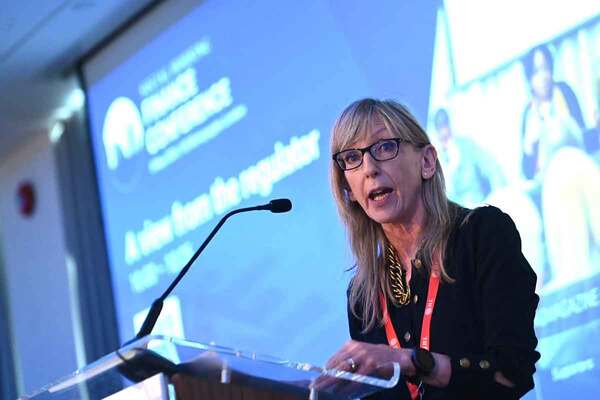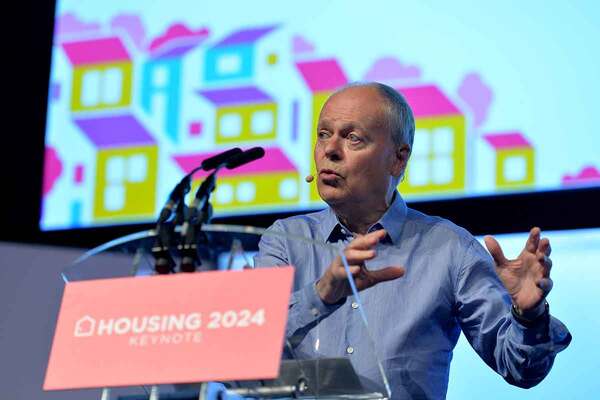You are viewing 1 of your 1 free articles
Cash interest cover remains low as a result of record repairs spend, regulatory data shows
The sector’s cash interest cover was below 100 per cent for the sixth consecutive quarter, as record repairs spend continued to put pressure on providers’ finances in the last three months of the financial year.
The Regulator of Social Housing’s (RSH) Quarterly Survey, covering the three months between January and March this year, showed that cash interest cover based on net operating cash flows excluding sales stood at 84 per cent in the quarter.
This was a drop from 79 per cent in the previous quarter and the sixth consecutive quarter where interest cover on this basis has been below 100 per cent.
However, there was a slight improvement in 12-month rolling interest cover, from 71 per cent in the previous quarter to 76 per cent at the end of March. But this was below the 12-month rolling level recorded in the fourth quarter of 2022-23 of 87 per cent.
Almost half of providers reported aggregate cash interest cover below 100 per cent for the 12 months to March 2024.
For the 12 months to March 2025, cash interest cover excluding sales receipts was forecast to average 75 per cent, a drop from an 80 per cent forecast in December.
The RSH said the drop in forecast interest cover was “attributable to record projected levels of spend on repairs and maintenance and rising interest costs”.
The data, published on Thursday 6 June, also showed a three-year high in new finance agreements during the period.
The regulator said that repairs expenditure continued to increase, with record spend on both capital and revenue repairs in the quarter.
Total repairs and maintenance spend in the fourth quarter rose by 10 per cent from £2bn in December to £2.2bn at the end of March. This comprised £1bn related to capital works and £1.2bn related to revenue works.
This spending on repairs was the highest level recorded since data was first collected in June 2022, as damp and mould works continued to be prioritised.
The 12-month expenditure on capitalised repairs totalled £3.2bn and a further £4.1bn investment was forecast over the next 12 months. Both of these were record amounts.
Providers continued to report higher volumes in responsive repairs “driven by the management of damp and mould issues, building safety compliance repairs, and catch-up works”, the regulator said in its Quarterly Survey.
“It is evident that levels of interest cover have deteriorated and are set to remain depressed in the short term, however this does not necessarily mean that providers are not financially viable in the longer term,” it added.
“In general, liquidity remains strong with the sector continuing to be attractive to lenders and investors, indicated by the record levels of new financing.
“The regulator will continue to monitor the financial viability of providers that are forecasting low interest cover and will engage with providers as necessary, reflecting findings in regulatory judgements where appropriate.”
‘Taking action’ to manage financial position
A total of 52 providers reported having one or more loan covenant waivers in place during the fourth quarter, a rise from 48 as of the end of December.
The regulator said that providers were continuing to make use of loan covenant waivers to prioritise and increase investment in existing stock.
A total of 23 providers reported having a waiver in place to exclude the “exceptional costs” of building safety works from loan covenant calculations, the RSH said.
A further 22 waivers were disclosed in respect of energy efficiency or decarbonisation works, and five related to the exclusion of general major repairs spend.
The RSH said it had assurance that providers were “taking action to manage their position”, including for some the arrangement of loan covenant waivers or deferral of uncommitted development.
“We will continue to monitor and engage with individual providers as necessary and reflect findings in regulatory judgements where appropriate,” the RSH said.
“Boards must ensure that they maintain strong and effective control over financial performance.”
Development and sales
Twelve-month development expenditure increased by 10 per cent year-on-year to reach £14.4bn.
However, 12-month projected spend dropped by four per cent quarter-on-quarter to £15.2bn, its lowest level since March 2020.
In addition, £3.1bn was invested in new housing properties in the last three months of 2023-24, the lowest quarterly amount since September 2022.
Meanwhile, the RSH reported that current asset sales receipts totalled £3.1bn in the last financial year, “substantially below” the £4.2bn recorded in the previous 12 months.
The regulator said that market sales remained “significantly below average” with 841 sales achieved in the fourth quarter, compared to a 1,116 three-year average. However, there were 4,606 affordable homeownership sales in the last quarter of the year, above the three-year quarterly average of 4,274 units.
Annual sales for 2023-24 reached 17,204 units, compared to 16,582 units in 2022-23.
Sign up for Social Housing’s weekly news bulletin
Social Housing’s weekly news bulletin delivers the latest news and insight across finance and funding, regulation and governance, policy and strategy, straight to your inbox. Meanwhile, news alerts bring you the biggest stories as they land.
Already have an account? Click here to manage your newsletters.
RELATED









